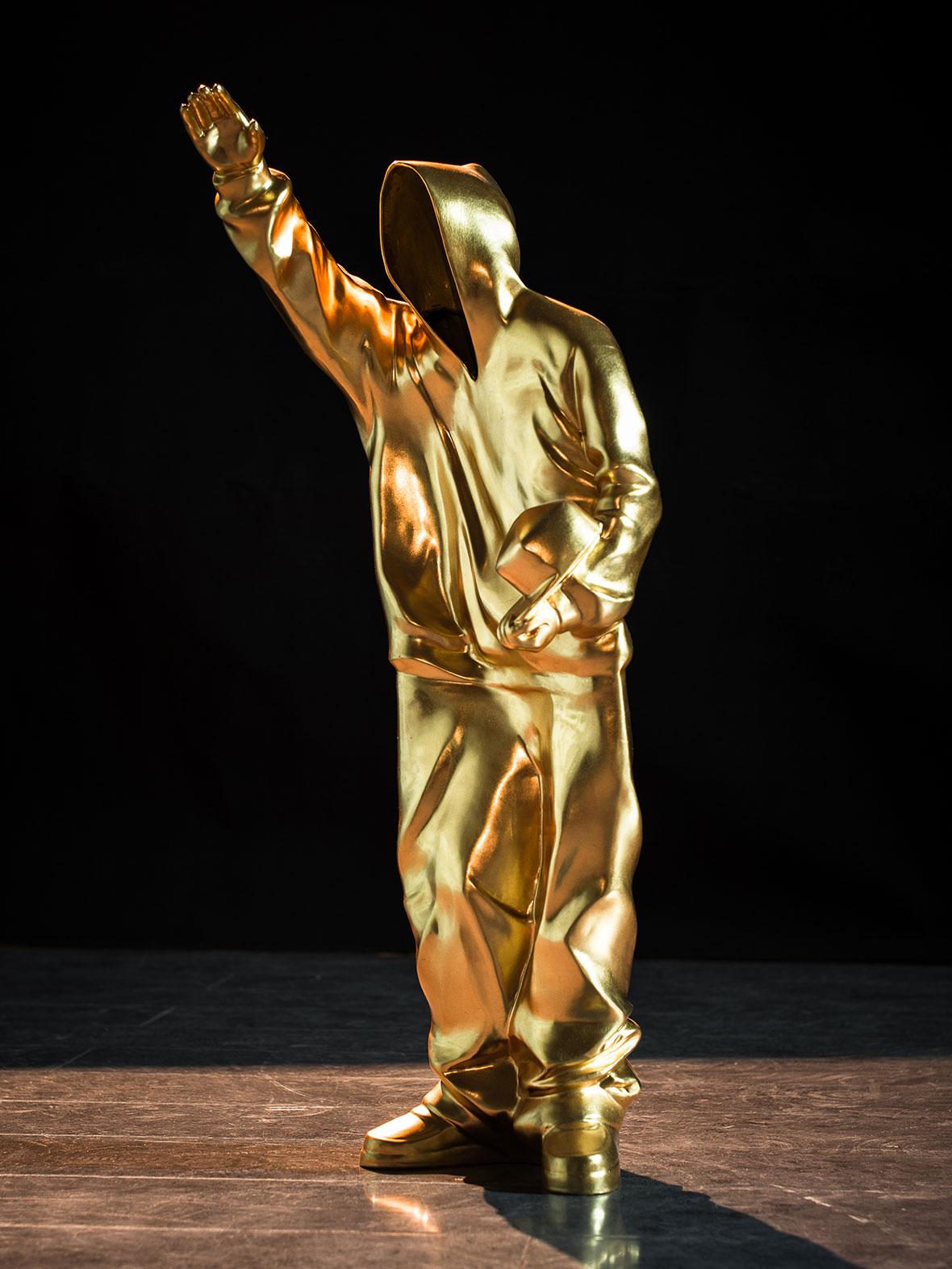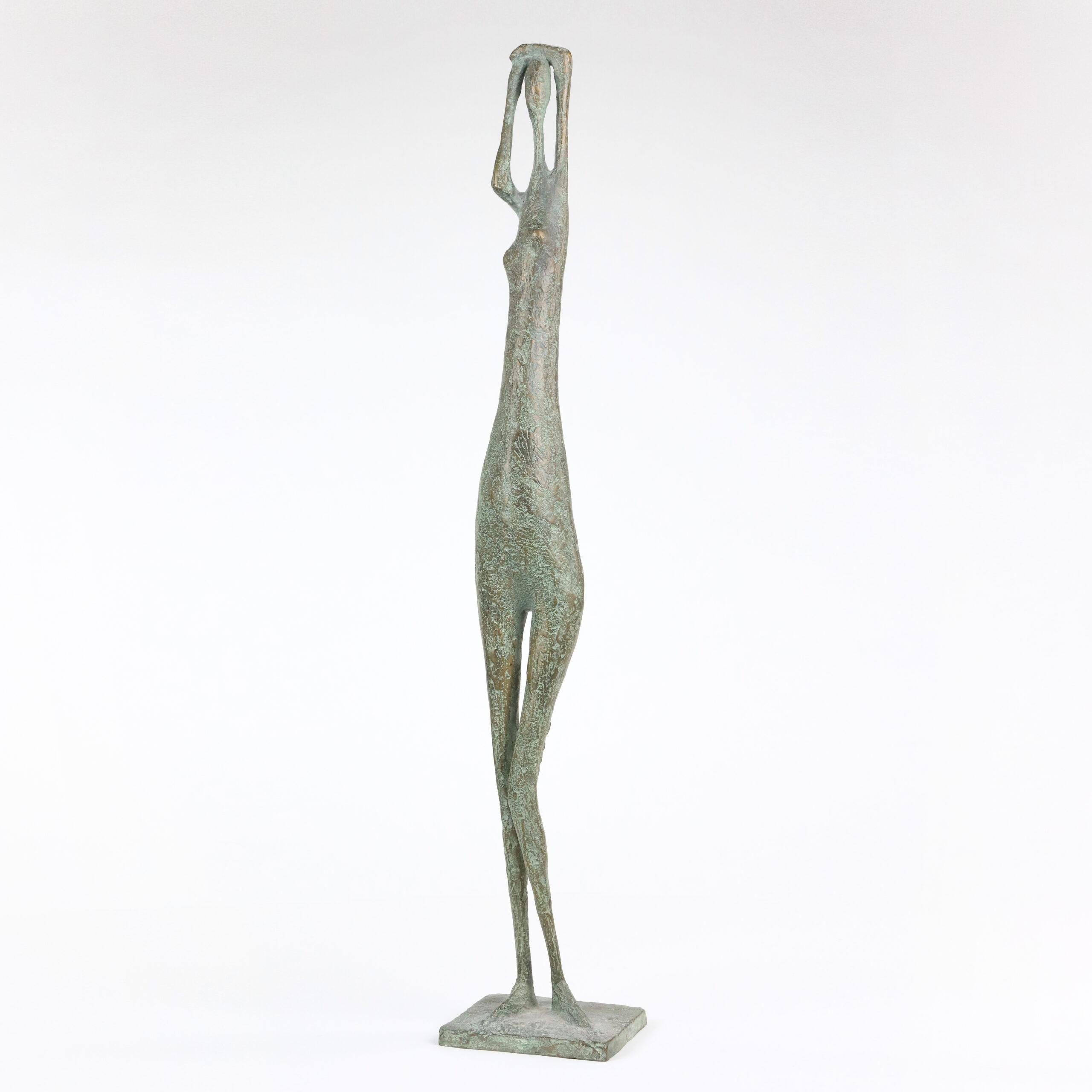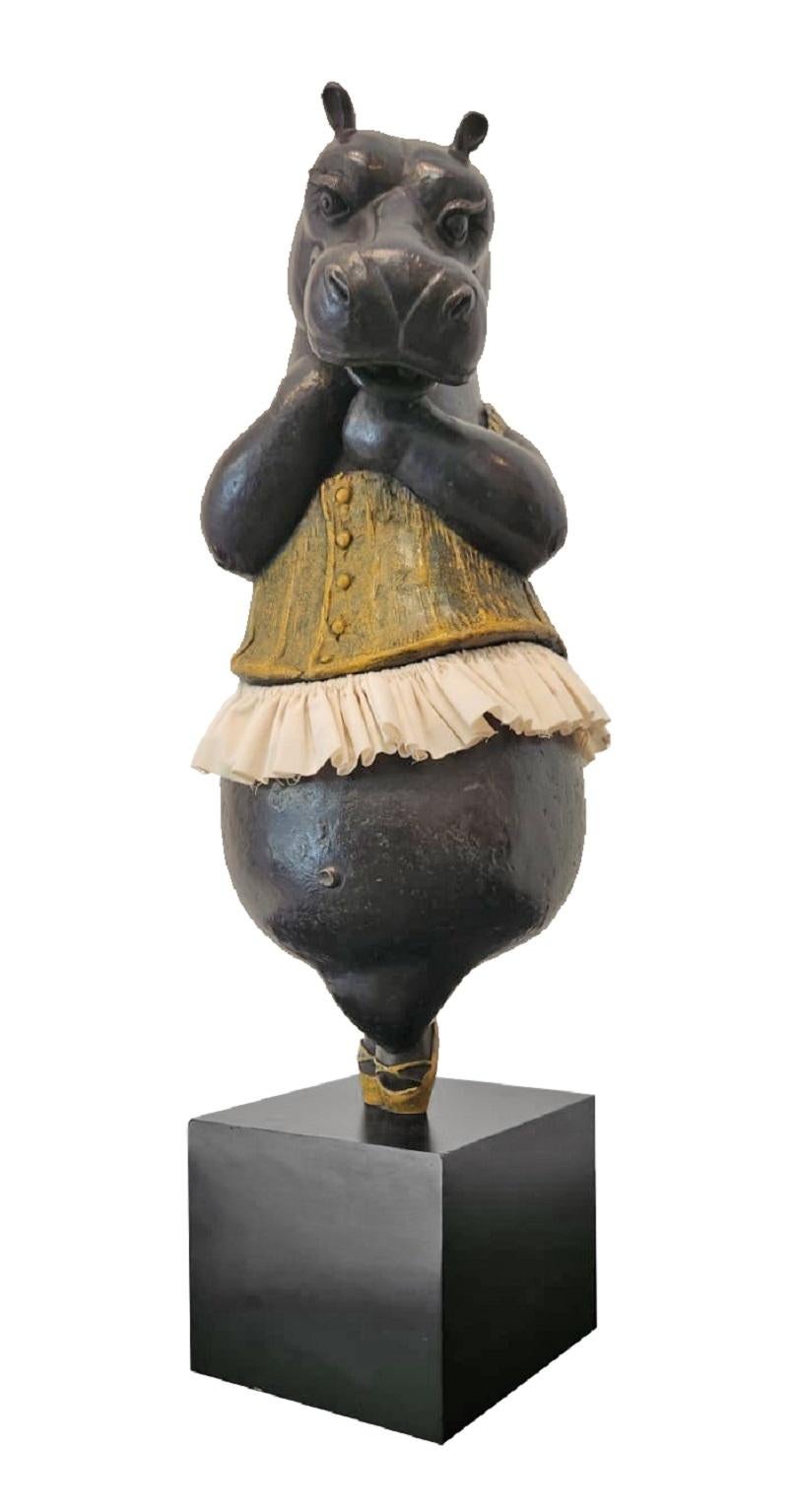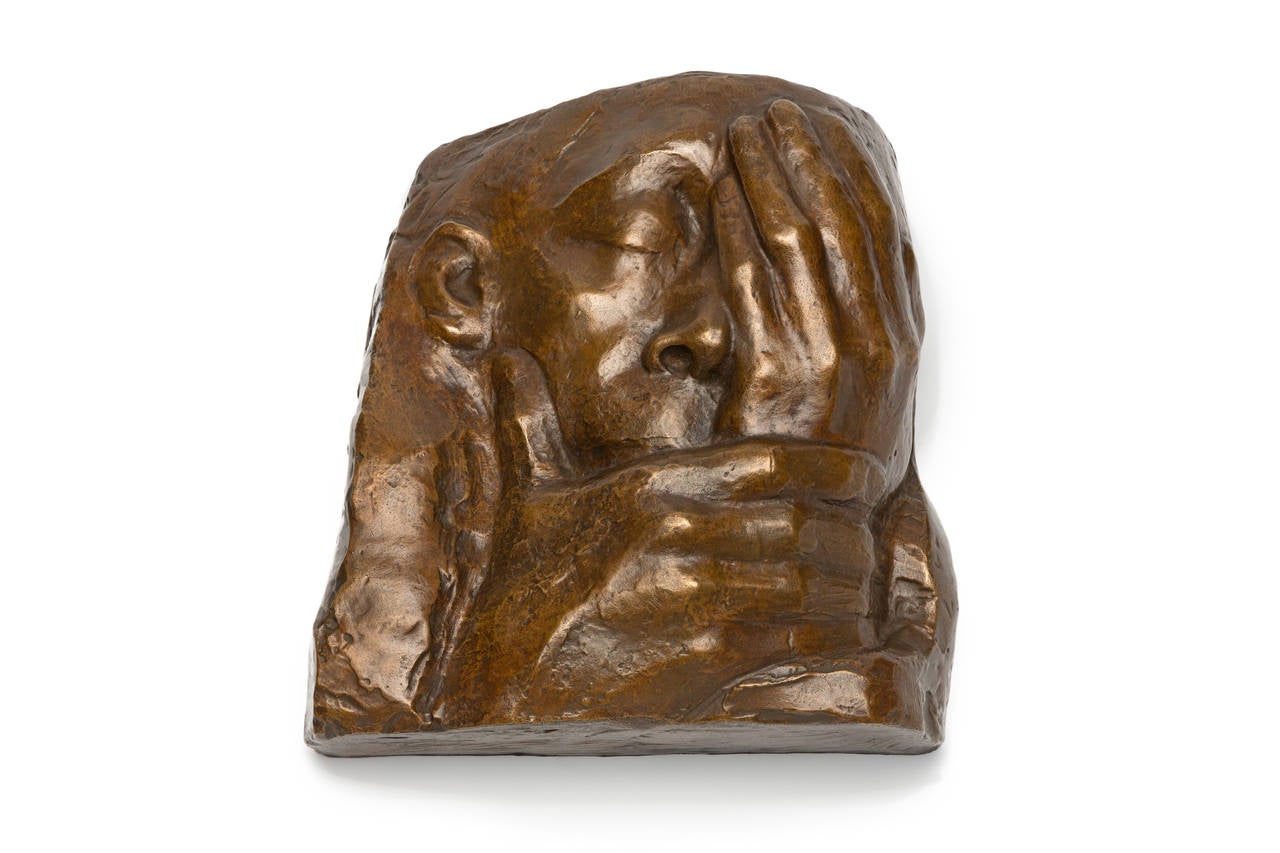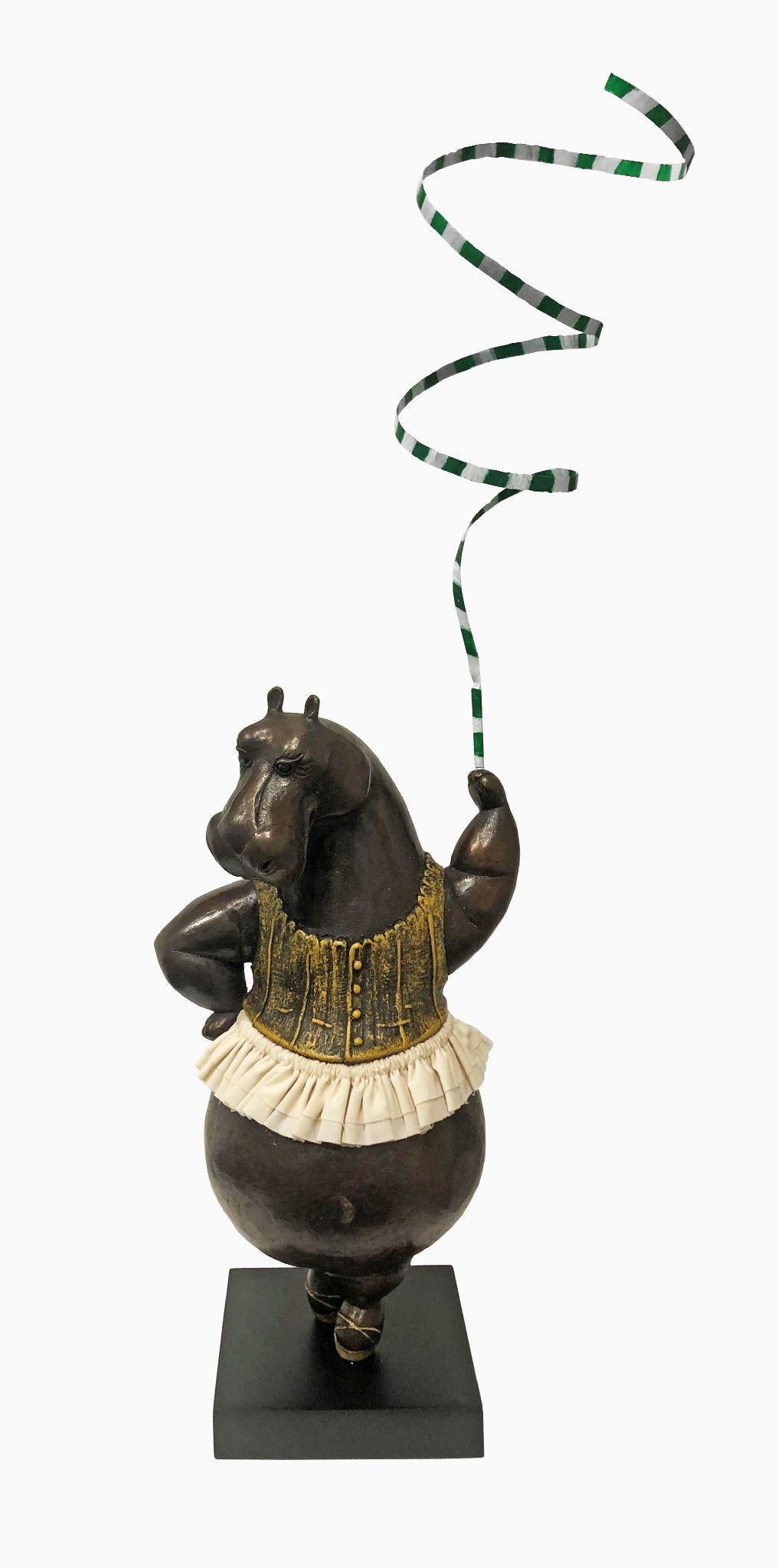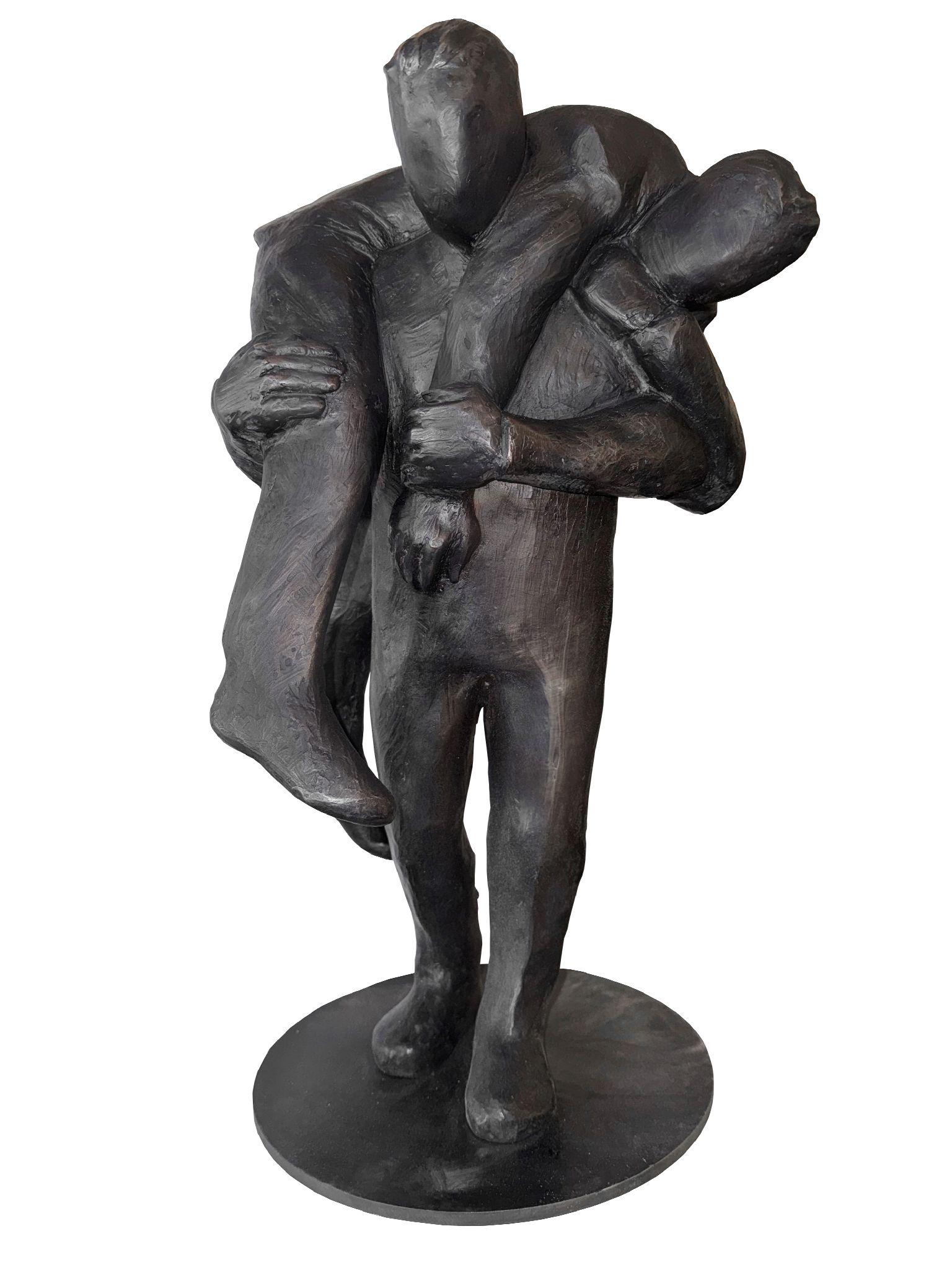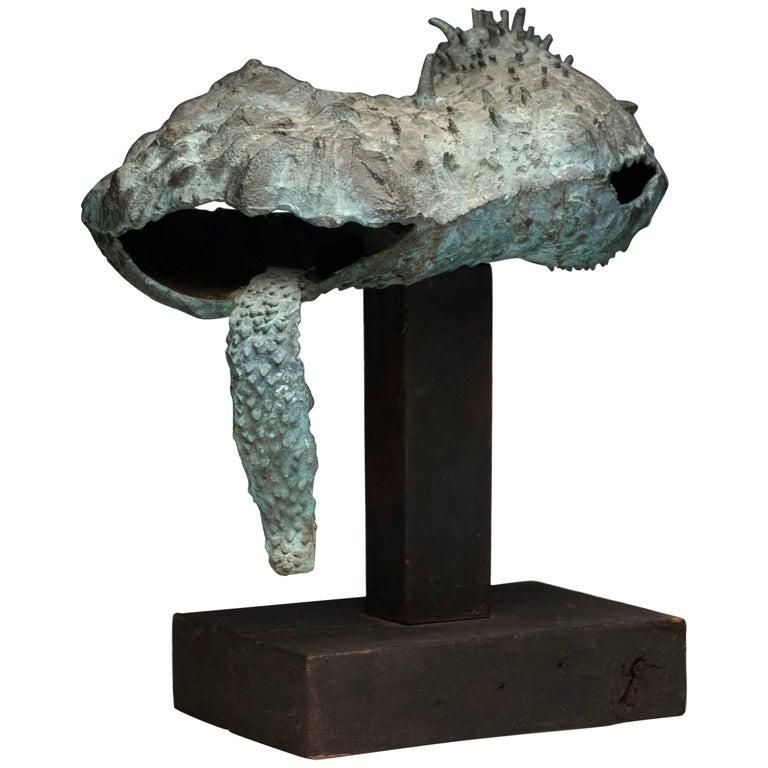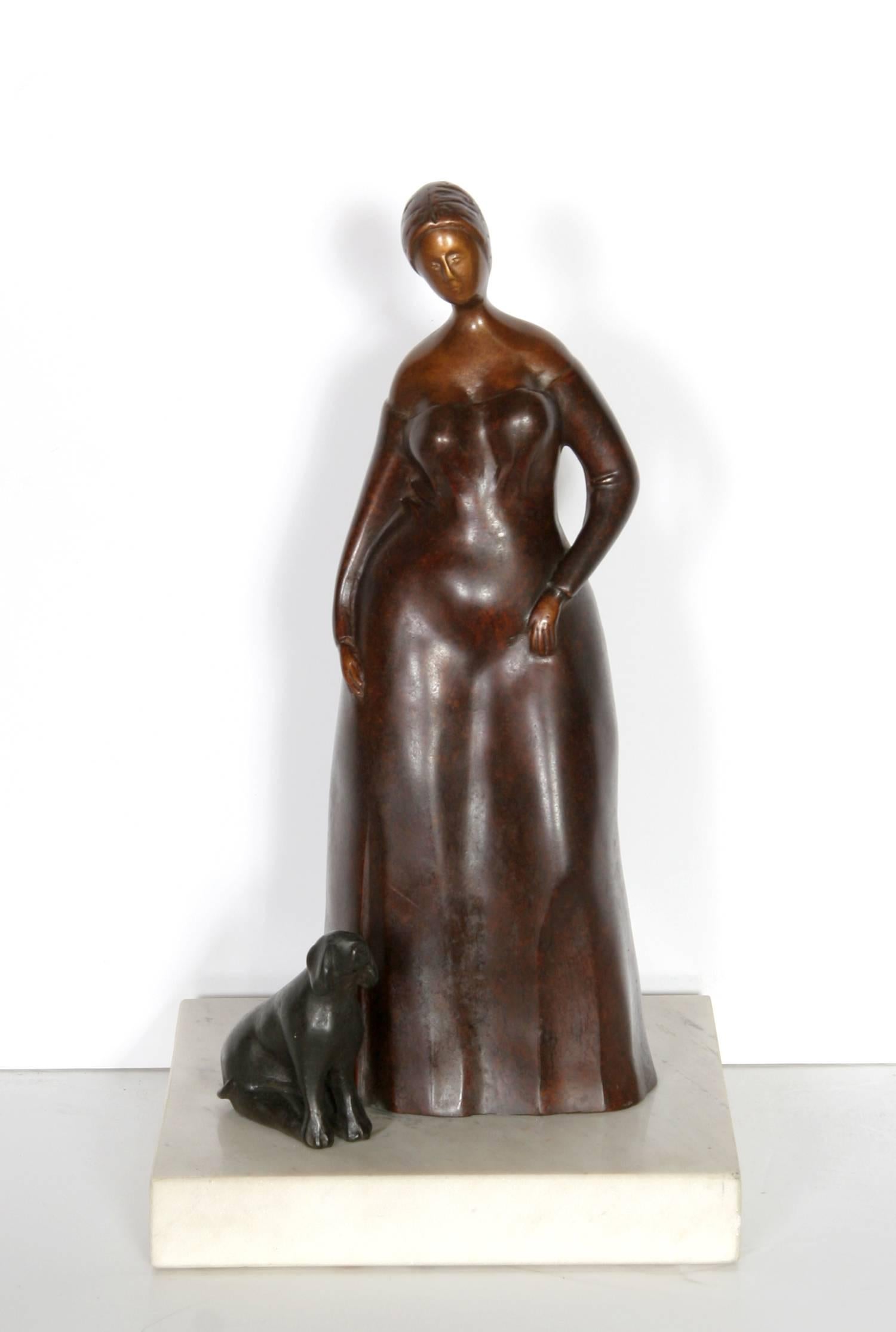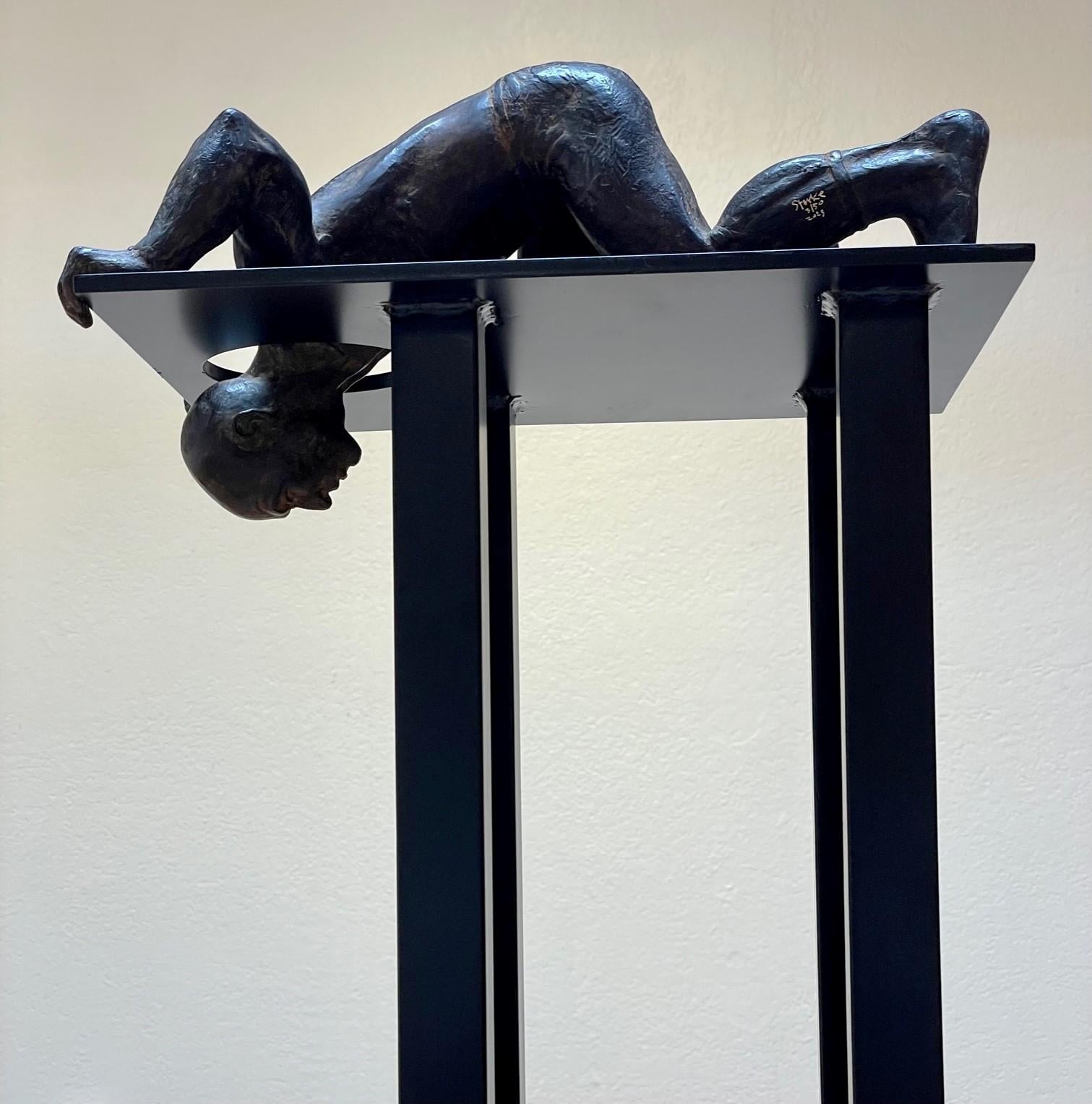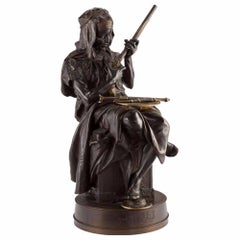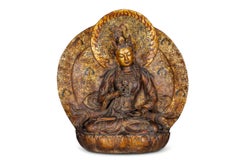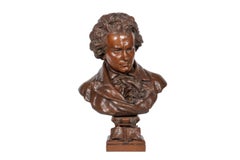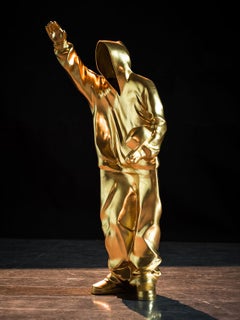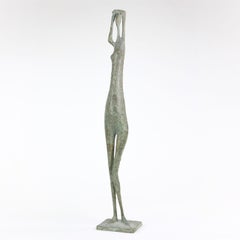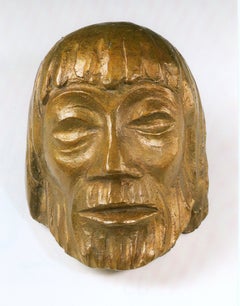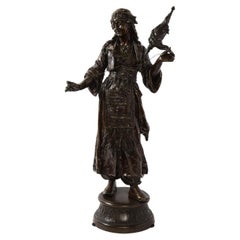
Émile Guillemin, a French Patinated Bronze Figure of an Orientalist Dancer
View Similar Items
Want more images or videos?
Request additional images or videos from the seller
1 of 15
UnknownÉmile Guillemin, a French Patinated Bronze Figure of an Orientalist Dancer1880
1880
About the Item
- Creation Year:1880
- Dimensions:Height: 27 in (68.58 cm)Width: 14 in (35.56 cm)
- Medium:
- Period:
- Condition:
- Gallery Location:New York, NY
- Reference Number:1stDibs: LU115129228562
About the Seller
5.0
Vetted Professional Seller
Every seller passes strict standards for authenticity and reliability
Established in 1980
1stDibs seller since 2019
13 sales on 1stDibs
Authenticity Guarantee
In the unlikely event there’s an issue with an item’s authenticity, contact us within 1 year for a full refund. DetailsMoney-Back Guarantee
If your item is not as described, is damaged in transit, or does not arrive, contact us within 7 days for a full refund. Details24-Hour Cancellation
You have a 24-hour grace period in which to reconsider your purchase, with no questions asked.Vetted Professional Sellers
Our world-class sellers must adhere to strict standards for service and quality, maintaining the integrity of our listings.Price-Match Guarantee
If you find that a seller listed the same item for a lower price elsewhere, we’ll match it.Trusted Global Delivery
Our best-in-class carrier network provides specialized shipping options worldwide, including custom delivery.More From This Seller
View AllEmile-Edmond Peynot "Albaya' El Tunsi" The Tunisian Merchant Bronze, 1883
Located in New York, NY
Émile-Edmond Peynot, (French, 1850 -1932)
An exceptional, exquisite and rare orientalist bronze sculpture titled Albaya' El Tunsi / The Tunisian Merchant / The Arab rifleman.
Dep...
Category
19th Century Figurative Sculptures
Materials
Bronze
A Monumental Gilt-Lacquered Bronze Ornamental Sculpture of Vajravidarana
Located in New York, NY
A Monumental Gilt-Lacquered Bronze Ornamental Buddha Sculpture of Vajravidarana:
A Masterpiece of Sino-Tibetan Craftsmanship, Late 19th Century, Qing Dynasty
This monumental gilt-lacquered bronze ornamental sculpture of Vajravidarana is an extraordinary and commanding piece of art, showcasing the pinnacle of Sino-Tibetan craftsmanship from the late 19th century. The figure of Vajravidarana, a powerful purification deity in Tibetan Buddhism, is meticulously sculpted to embody both spiritual authority and artistic excellence.
Vajravidarana is primarily known for his role in removing spiritual impurities and negativities. Unlike other deities associated with wisdom or compassion, Vajravidarana’s function is centered on purification and healing. He is typically depicted holding a vajra and a bell, symbolizing the cutting away of delusions and the resonance of divine truth. In this striking sculpture, Vajravidarana is shown holding a vishva vajra (the double vajra), a unique and powerful variation of the traditional iconography, which signifies ultimate protection and the dispelling of negative karma.
Vajravidarana: The Supreme Purifier and Protector
Vajravidarana is revered in Tibetan Buddhism as the deity of spiritual purification, called upon to cleanse practitioners of defilements and negative influences. His vajra represents the indestructibility of truth, while his bell signifies the wisdom that resonates through purification rituals. In this sculpture, the presence of the vishva vajra, or double vajra, enhances his association with supreme protection, ensuring the destruction of all spiritual obstacles and afflictions.
The figure’s powerful yet composed expression conveys a sense of unwavering resolve and divine authority. His posture, along with the carefully sculpted details of his robes and ornaments, highlights his function as a guardian against impurity. The inclusion of the vishva vajra rather than the usual single vajra reinforces his role as a supreme protector, capable of dispelling all forms of negativity and restoring balance.
Symbolism of the Mantras and Aureole:
Unlike deities that embody wisdom through duality, Vajravidarana’s iconography is centered on purification and exorcism. The aureole surrounding him is inscribed with sacred purification mantras rather than depictions of a consort. These mantras emphasize his function as a remover of obstacles and impurities, reinforcing his role in Buddhist healing rituals.
The presence of the sacred inscriptions elevates the sculpture’s spiritual significance, making it a focal point for meditation and ritual purification. Practitioners often visualize Vajravidarana radiating purifying light, dissolving afflictions and negative karma. This theme is mirrored in the sculptural repetition of the purification symbols on the aureole, reinforcing the deity’s role as a divine cleanser.
Gilt-Lacquered Bronze: The Artistry of Sino-Tibetan Metalwork:
The craftsmanship of this monumental figure reflects the expertise of late 19th-century Sino-Tibetan metalwork, where traditional Tibetan themes were infused with Chinese artistic sensibilities. Cast in bronze and finished with a rich gilt lacquer, the statue has an otherworldly glow, giving it an ethereal, almost divine presence. The gilding process—applied with exceptional skill—gives the sculpture a striking luminosity that enhances the fine details of the facial features, flowing robes, jewelry, and other elements of the deity’s attire.
The technique employed to create this figure speaks to the high level of craftsmanship that flourished during the late Qing Dynasty and early modern Tibetan art. The ornate details of the robes and the fine texture of the sculpture highlight the exceptional skill of the artisans who brought this work to life. The use of gold and lacquer not only reflects the preciousness of the sculpture but also its spiritual significance as an object meant to inspire reverence and meditation.
An Ornamental Sculpture of Monumental Scale:
Unlike smaller devotional objects, this sculpture is designed as an ornamental masterpiece, intended to make a grand visual and spiritual statement. Its monumental size allows it to dominate any space, offering a commanding presence that is both physically and symbolically impressive. In Buddhist practice, large sculptures of this nature are often placed in temples or meditation halls, where their imposing size and serene presence would encourage contemplation and devotion.
The grand scale of the statue further amplifies the spiritual power it is meant to convey. As a representation of Vajravidarana, it is not only a physical object of beauty but also a conduit for meditation, purification, and enlightenment. The scale of the sculpture also emphasizes the divine stature of the deity, highlighting his importance in the Buddhist tradition as the ultimate force for spiritual cleansing and protection.
Provenance:
Acquired in China in circa 1900
1905 Private Buddhist Temple, Northeast, USA
Private Sale
Solomon Treasure...
Category
19th Century Figurative Sculptures
Materials
Bronze
A Monumental, Richly Patinated Bronze Bust of Beethoven by G. Leroux
By Gaston Leroux
Located in New York, NY
A Monumental, Richly Patinated Bronze Bust of Beethoven by Gaston Veuvenot Leroux (1854-1942) & Eugène Blot, Fondeur
This magnificent sculpture powerfully captures the iconic compos...
Category
19th Century Figurative Sculptures
Materials
Bronze
$18,750 Sale Price
25% Off
Le Garde Du Harem, A Monumental Orientalist Bronze Sculpture by G. Coudray
By Georges Charles Coudray
Located in New York, NY
Le Garde Du Harem, "The Harem Guard" A Monumental Orientalist Patinated Bronze Sculpture by Georges Charles Coudray (French, 1862-1932)
Le Gar...
Category
19th Century Figurative Sculptures
Materials
Bronze
A Large and Exceptional Japanese Meiji Period Tokyo School Bronze Sculpture
Located in New York, NY
Presenting an extraordinary Large and Exceptional Japanese Meiji Period Tokyo School Bronze Sculpture depicting a delightful ensemble of six energe...
Category
19th Century Figurative Sculptures
Materials
Bronze
A Rare Gilt and Patinated Bronze Jockey on A Horse, circa 1875
By Isidore Jules Bonheur
Located in New York, NY
Isidore-Jules Bonheur (French, 1827–1901)
A Rare Gilt and Patinated Bronze Jockey on A Horse, circa 1875.
Introducing a truly exceptional and highly so...
Category
19th Century Figurative Sculptures
Materials
Bronze
$18,900 Sale Price
30% Off
You May Also Like
"Leader 3" Bronze Sculpture 26" x 9.5" x 7.5" inch Edition 3/8 by Huang Yulong
By Huang Yulong
Located in Culver City, CA
"Leader 3" Bronze Sculpture 26" x 9.5" x 7.5" inch Edition 3/8 by Huang Yulong
ABOUT THE ARTIST
Huang Yulong was born in 1983 in Anhui Province, China. In 2007 he graduated with a Bachelor of Fine Arts in Sculpture from the Jingdezhen Ceramic Institute in Jiangxi Province. As one of the new generation of Chinese artists and part of the ‘post-80s generation’ and ‘only child’ generation, Huang is strongly influenced by the phenomenon of foreign culture in China, which he combines with his fascination with pottery and the material world. Huang is best known for his sculptures of Buddhas in hoodies, displaying an exchange of Eastern tradition and Western contemporary style. He was selected by “Complex” as “25 Contemporary Chinese Artists You Need to Know” in 2013. His sculptures have been exhibited at Niubi Newbie Kids II, at Schoeni Gallery, Hong Kong; “Zeitgeist” Huang Yulong’s Solo Exhibition at Himalayas Art Museum, Shanghai, China; Chinese Artist / Marseille Artist at Marseilles, France; The 4th International Contemporary Art Exhibition at Gwangju Biennale Korea, Art Beijing Art...
Category
21st Century and Contemporary Contemporary Figurative Sculptures
Materials
Bronze
Arms Raised Standing Figure VIII by Pierre Yermia - Bronze sculpture, human
By Pierre Yermia
Located in Paris, FR
Arms Raised Standing Figure VIII is a bronze sculpture by French contemporary artist Pierre Yermia, dimensions are 60 × 11 × 9 cm (23.6 × 4.3 × 3.5 in).
The sculpture is signed and ...
Category
2010s Contemporary Figurative Sculptures
Materials
Bronze
Ernst Barlach Bronze Christ Mask VI, 1931
By Ernst Barlach
Located in Berlin, DE
Bronze with light gold patina, 1931. Numbered 6/11, signed. Foundry stamp: H. Noack Berlin
Width: 4.8 in ( 12,2 cm ), Depth: 3.31 in ( 8,4 cm ), Height: 6.1 in ( 15,5 cm )
Category
1930s Figurative Sculptures
Materials
Bronze
Hippo Ballerina, en pointe
By Bjørn Okholm Skaarup
Located in Greenwich, CT
Bjorn Skaarup Biography
Danish, b. 1973
Bjorn Skaarup holds a MA in History and Art History from the University of Copenhagen, and a PHD in History from the European University Inst...
Category
2010s Contemporary Figurative Sculptures
Materials
Bronze
Price Upon Request
Klage um Ernst Barlach ( Memorial for Ernst Barlach )
By Käthe Kollwitz
Located in Berlin, DE
Impressive Bronze Relief by Käthe Kollwitz ( 1867-1945, Germany ). Created 1938 in memory of her friend Ernst Barlach.
Bronze brown patinated. On the left side signed: Kollwitz.
He...
Category
1930s Realist Figurative Sculptures
Materials
Bronze
Hippo Circus Ribbon Dancer II, maquette
By Bjørn Okholm Skaarup
Located in Greenwich, CT
Danish, b. 1973
Bjorn Skaarup holds a MA in History and Art History from the University of Copenhagen, and a PHD in History from the European University Institute in Florence, Italy...
Category
2010s Contemporary Figurative Sculptures
Materials
Bronze
Price Upon Request
